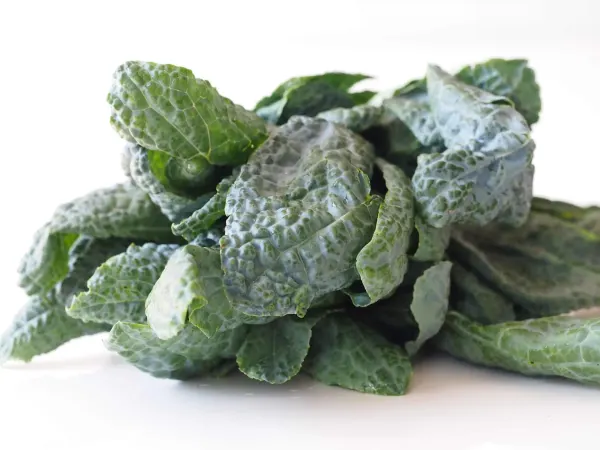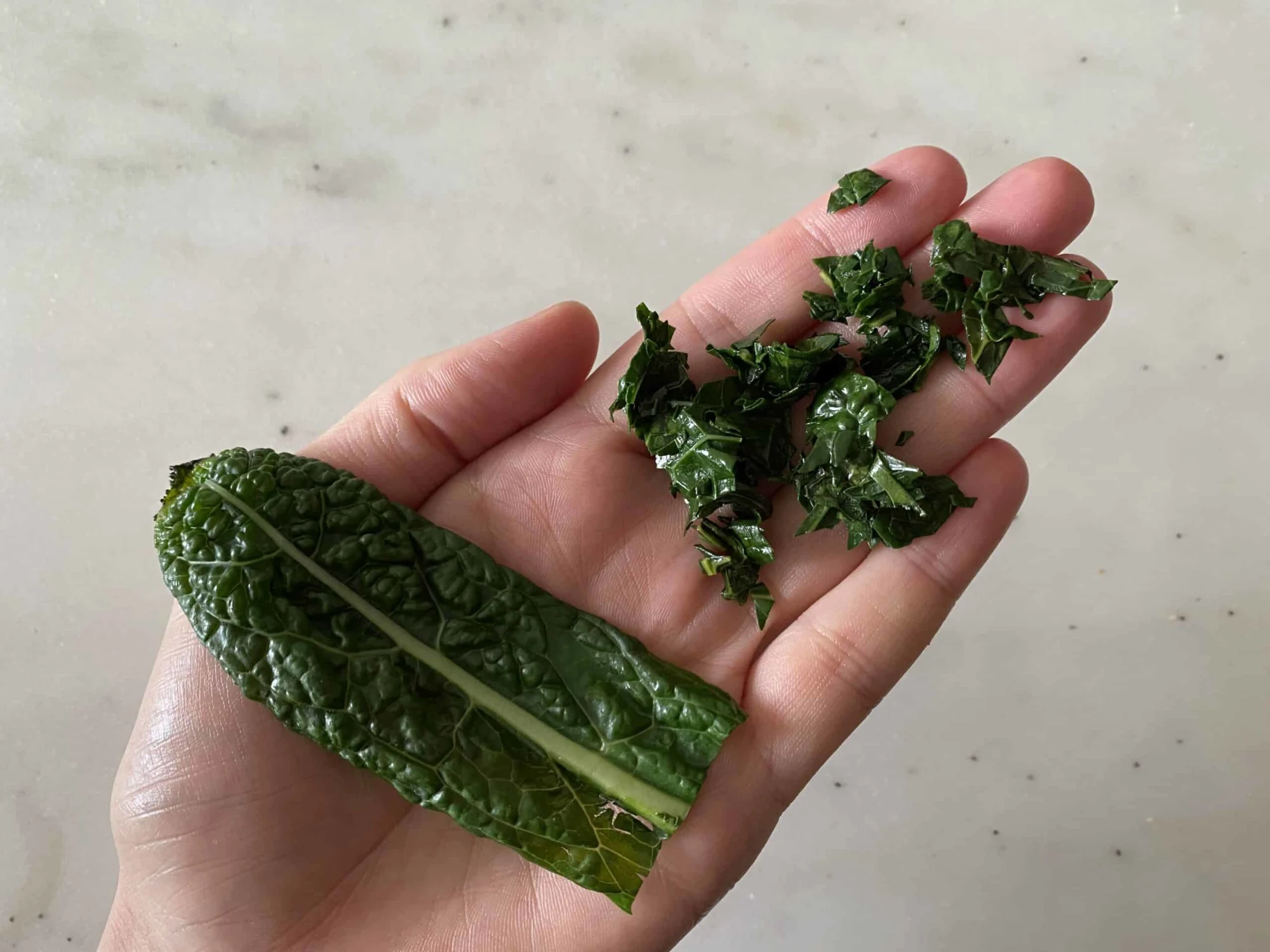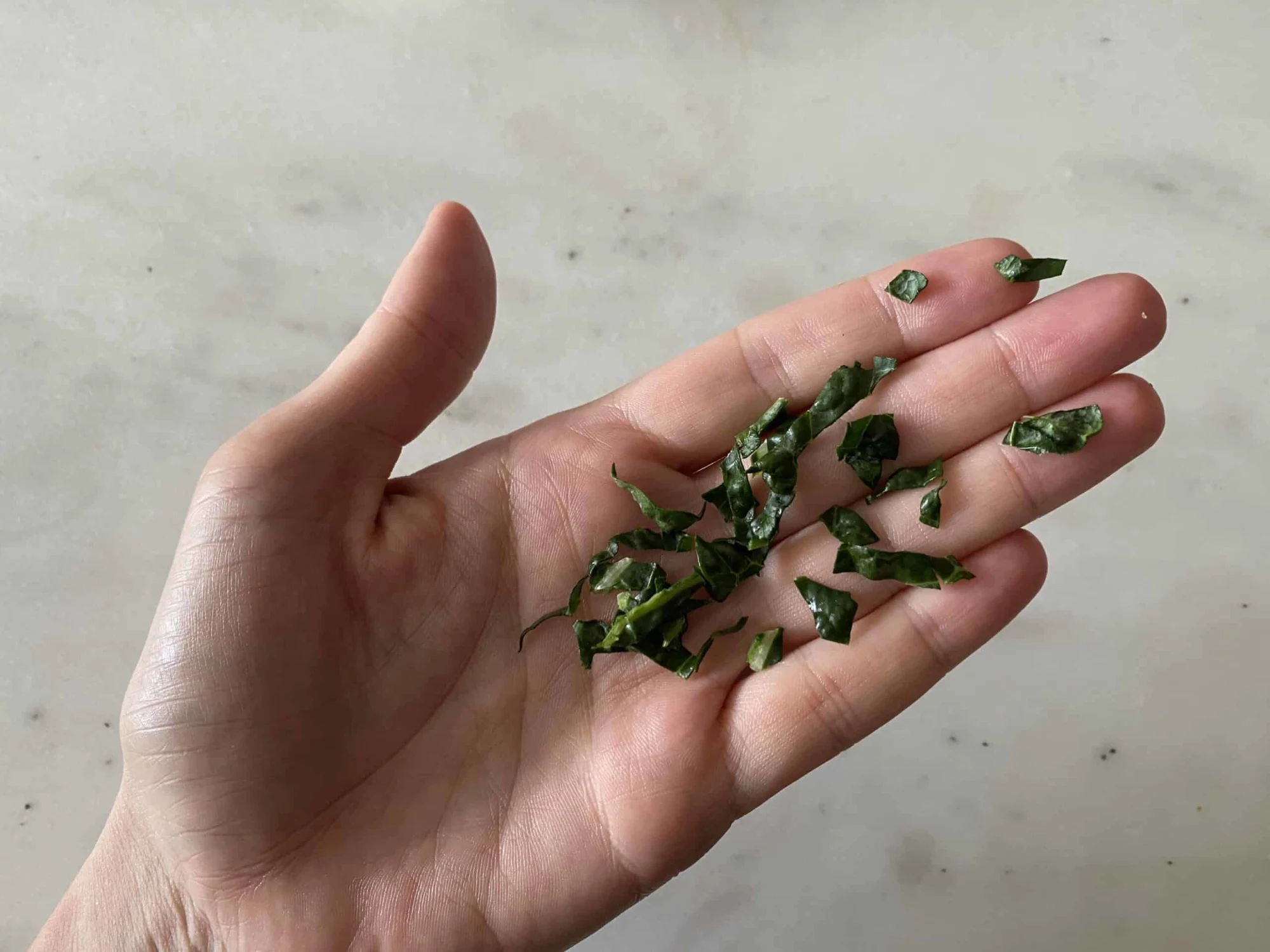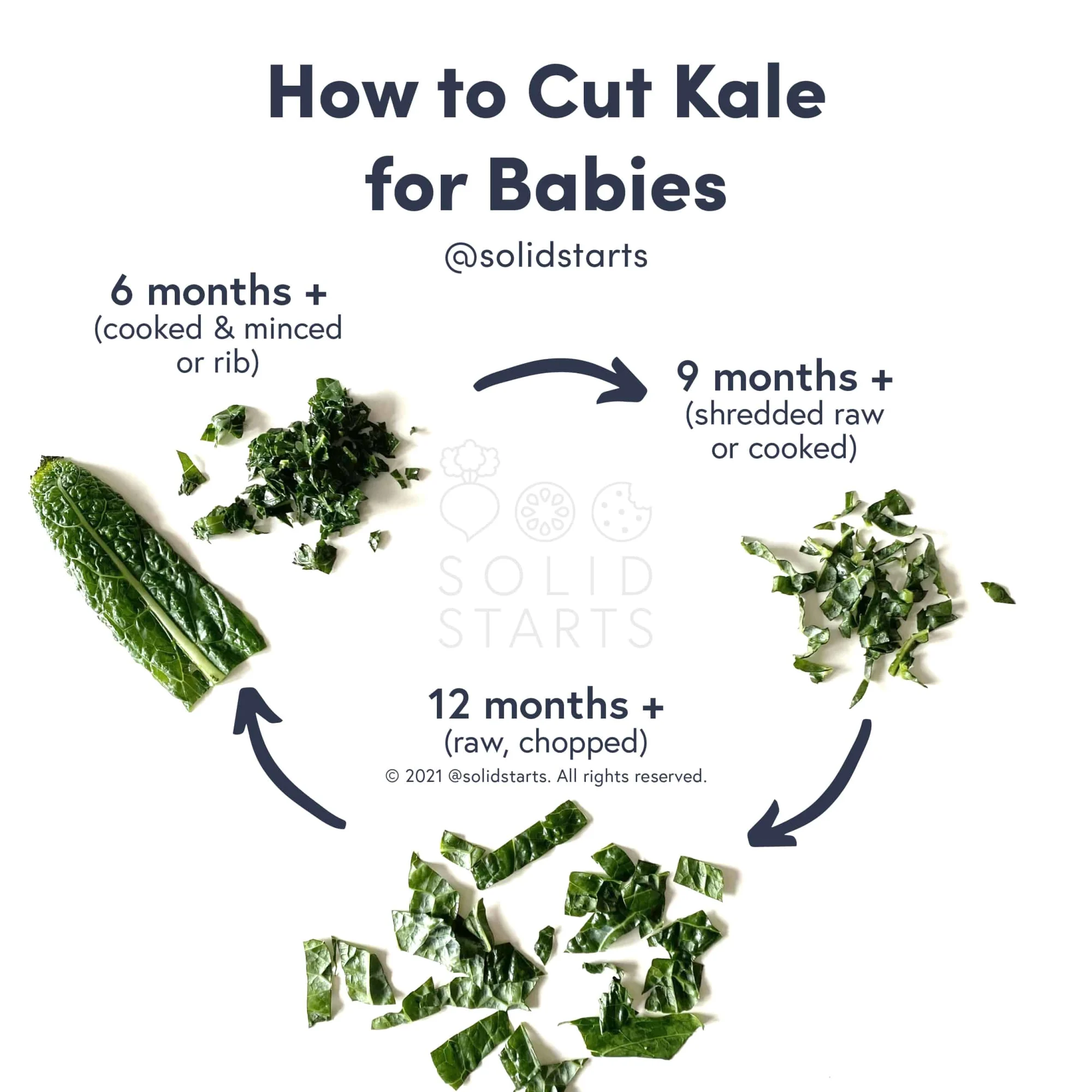Kale
Vegetable
Age Suggestion
6 months
Iron-Rich
No
Common Allergen
No

When can babies have kale?
Kale may be introduced as soon as baby is ready to start solids, which is generally around 6 months of age.
A relative of cabbage and the Brassica family with origins in the lands around the Mediterranean Sea, kale has been eaten and cultivated for thousands of years. Other names include boerenkool, cole, and colewort, and the word kale or kail comes from Scotland, where the leafy green was long considered such a staple that to be “off one’s kail” meant to have no appetite or to be too sick to eat.
Is kale healthy for babies?
Yes. Kale is rich in fiber, fluid, and folate, in addition to calcium, iron, and vitamins A, C, and K. These nutrients work together to support baby’s gut microbiome, hydration, brain development, bone health, energy, vision, iron absorption, blood clotting, and more. Plus, kale offers antioxidants such as glucosinolates, which offer additional health benefits.
Is kale a common allergen?
No, kale is not a common food allergen. Kale is part of the cruciferous vegetable family, and individuals who are allergic or sensitive to other cruciferous vegetables, such as mustard greens and broccoli, could be sensitive to kale as well.
Individuals with Oral Allergy Syndrome (also known as pollen food allergy syndrome), and in particular, those with sensitivities to mugwort pollen, may also be sensitive to cruciferous vegetables like kale. Oral Allergy Syndrome typically results in short-lived itching, tingling, or burning in the mouth and is unlikely to result in a dangerous reaction. Cooking kale can help minimize or even eliminate the reaction.
As you would when introducing any new food, start by offering a small quantity for the first few servings. If there is no adverse reaction, gradually increase the quantity over future meals.
Is kale a choking hazard for babies?
No. Kale presents a low risk when safely prepared for a child’s age and developmental ability, though, in theory, an individual could choke on any food. To reduce the risk, prepare and serve kale in an age-appropriate way as described in the How to Serve section. Kale can also cause some gagging or coughing as the leaves cling to baby’s tongue or the roof of their mouth. Offer a drink in an open cup to help baby wash any pieces of food down. As always, make sure you create a safe eating environment and stay within an arm’s reach of baby during meals.
Learn the signs of choking and gagging and more about choking first aid in our free guides, Infant Rescue and Toddler Rescue.
Videos
Can babies have kale chips?
Yes. Kale chips may be introduced as soon as baby is ready to start solids, as long as they crumble easily with minimal pressure. Large chips or pieces will make it easier for babies to self-feed. While some kale chips can be high in sodium, a bite here and there as part of a varied diet is fine. If you share kale chips with baby regularly and are looking to reduce sodium in baby’s diet, you can opt for ones that are low in sodium.
Do I need to worry about the nitrates in kale?
No. Offer vegetables that contain nitrates (arugula, beets, carrots, lettuce, spinach, and squash to name a few) as part of a variety of foods in the diet. Nitrates are naturally-occurring compounds which, if consumed in excess, may negatively affect oxygen levels in the blood. That said, babies who are allowed to self-feed typically do not consume excessive amounts of solid food because they need lots of practice to learn how to eat it. Nitrates in vegetables are generally not a cause for concern, and the benefits of introducing vegetables with nitrates as part of a balanced diet typically outweigh the unlikely risk of excessive consumption.
★ Tip: To reduce the risk of illness from nitrates, if making homemade kale puree, make sure to serve it immediately and do not share leftovers that have been stored in the refrigerator for more than a day or two with baby, as nitrate content can increase with improper storage.
Do I need to worry about the oxalates in kale?
No. Plant compounds such as oxalates, lectins, and phytates are naturally present in kale and other plants. These compounds are sometimes called anti-nutrients, but rest assured that these plant compounds are generally harmless in healthy people when consumed as part of a balanced diet and break down to some degree during the cooking process. They can even offer health benefits, such as antioxidant and anti-cancer properties.
How do you serve kale to babies?
Every baby develops on their own timeline, and the suggestions on how to cut or prepare particular foods are generalizations for a broad audience.
6 months old +:
Offer finely chopped or shredded cooked kale mixed into mashed vegetables, porridge, or another soft food that baby can scoop. While you can offer the soft, well-cooked kale pieces on their own, the small pieces may cling to the tongue and inside the mouth. Mixing the small pieces into soft scoopable foods or mixing them into finger foods like egg strips or meat patties can minimize coughing and gagging.
If baby doesn’t have teeth yet, you can also consider offering a thick, raw kale stem as a food teether. Baby may poke the back of their tongue or mouth with the stem, which may cause some gagging or coughing. Don’t be alarmed: this poking and prodding with sticks of food can actually be beneficial in helping baby learn the boundaries of their mouth with low risk of choking.
9 months old +:
Offer shredded cooked or raw kale and encourage baby to pick up the thin strands with their fingers. Worried about raw greens? Try not to be. While a bit more challenging to chew and move around the mouth, the texture is terrific for building baby’s eating skills. Alternatively, continue to serve kale chips or keep stirring finely chopped, cooked kale into other dishes as desired.
12 months old +:
Serve kale as desired, cooked or raw, chopped, shredded, or in larger pieces. Continue to to expect some spitting, but you may start to see more swallowing and consumption around this age, especially as the molars come in, which help the child grind more challenging textures. This is also a great age to encourage self-feeding with utensils. If the child needs help, simply preload an age-appropriate utensil and lay it next to the food for the toddler to pick up.


Written by
Expert Tips Delivered to Your Inbox
Sign up for weekly tips, recipes and more!
The content offered on SolidStarts.com is for informational purposes only. Solidstarts is not engaged in rendering professional advice, whether medical or otherwise, to individual users or their children or families. No content on this site, regardless of date, should ever be used as a substitute for direct medical advice from your doctor or your medical or health professional, nutritionist, or expert in pediatric feeding and eating. By accessing the content on SolidStarts.com, you acknowledge and agree that you are accepting the responsibility for your child’s health and well-being. In return for providing you with an array of content “baby-led weaning” information, you waive any claims that you or your child may have as a result of utilizing the content on SolidStarts.com.






